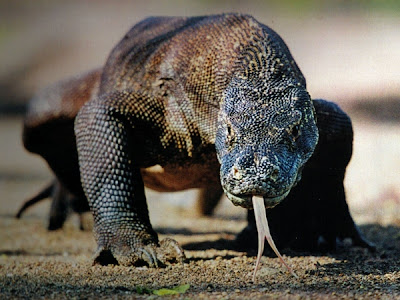Do Komodo Dragons Have Venom. As it turns out, there's no evidence that actually shows Komodo dragons have especially dirty mouths — no more so than one would expect from a predator that eats carrion. Rather than injecting venom directly via a forceful bite, the dragons use a specialized bite-and-pull motion to ooze the toxin into wounds during a sustained, frenzied attack.

Researchers debate whether the venom in a dragon's mouth contributes all that much to a prey's death.
The lizards' success in attacking big prey has intrigued scientists.
The Komodo will then track down the wounded (or dead) creature. Much of her hair is covered by a hood attached to a ruffled capelet with a dark beige scale pattern. Rather than injecting venom directly via a forceful bite, the dragons use a specialized bite-and-pull motion to ooze the toxin into wounds during a sustained, frenzied attack.








